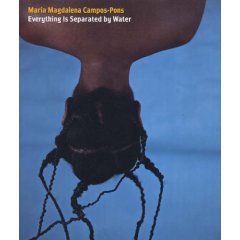
A few weekends ago I was able to catch
Everything is separated by water; an exhibition of 17 major pieces by María Magdalena Campos-Pons, an Afro-Cuban artist from Matanzas. I was stuck by how several of the pieces touched on questions of identity in a way which could be generalized to people of African descent, Latinos and immigrant Muslims. Whether you are talking about the Rio Grande, the Atlantic Ocean or the 90 miles which separate Miami from Cuba, 'everything' really is separated by water.
Memory, historical connections to Cuba and Africa, her dislocation and that of her ancestors fuel the 17 major works that comprise the Campos-Pons retrospective Everything is Separated by Water at the Bass Museum in Miami Beach.
''Her work is about constructing identity and cultural histories,'' says curator Lisa D. Freiman, who organized the retrospective for the Indianapolis Museum of Art, where it was staged more amply in 12,000 square feet of space. ``It's about who we become when we move to new places, and the feeling of not completely being whole in any place.''
'In my country, in my setting, in my town, `the problem' of being African wasn't about physical placement or about land,'' Campos-Pons explains. ``When we talked about Africa, we didn't talk about the continent. Africa was in my Cuban backyard.
''Africa was my father, my mother, my cousins and my aunts and uncles,'' she adds. ``They played the drums in the patio at all hours. The question of Africa arose from the point of view of the United States. When I was in Cuba, it was never a question.''
Using paint, herbs and wood sculpture -- sight, sounds and smells -- Campos-Pons conjures the image of the forest where the gods of santería are said to dwell. The forest also is the realm of their messenger and keeper of the roads, Eleguá, the orisha after whom Campos-Pons titles another work, The One Who Opens the Path (1997), a composition of 10 mammoth Polaroid Polacolor photographs.
Likewise, in another piece, The Seven Powers Come by Sea (1992), the seven orishas of the Yoruban pantheon are present in large wood sculptures that resemble slave ships and are carved with stick figures, showing how slaves were tightly stacked on ships sailing to the New World.
For the rest of the story, check out the Miami Herald:
Cuban artist connects memories of a fragmented life
